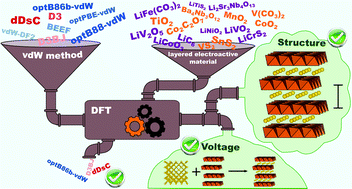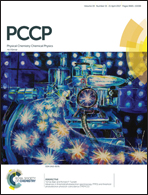Assessment of van der Waals inclusive density functional theory methods for layered electroactive materials†
Abstract
The discovery of computationally driven materials requires efficient and accurate methods. Density functional theory (DFT) meets these two requirements for many classes of materials. However, DFT-based methods have limitations. One significant shortcoming is the inadequate treatment of weak van der Waals (vdW) interactions, which are crucial for layered materials. Here we assess the performance of various vdW-inclusive DFT approaches for predicting the structure and voltage of layered electroactive materials for Li-ion batteries, considering a set of 20 different compounds. We find that the so-called optB86b-vdW density functional improves the agreement with the experimental data, closely followed by the latest generation of dispersion correction methods. These approaches yield average relative errors for the structural parameters smaller than 3%. The average deviations for redox potentials are below 0.15 V. Looking ahead, this study identifies accurate methods for Li-ion vdW bound systems, providing enhanced predictive power to DFT-assisted design for developing new types of electroactive materials in general.



 Please wait while we load your content...
Please wait while we load your content...